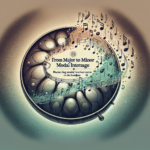<!DOCTYPE html>
<html lang="en">
<head>
<meta charset="UTF-8">
<meta name="viewport" content="width=device-width, initial-scale=1.0">
<title>Exploring Handpan: The Instrument Bridging East and West</title>
<style>
body {
font-family: Arial, sans-serif;
line-height: 1.6;
margin: 20px;
background-color: #f4f4f4;
color: #333333;
}
header {
text-align: center;
margin-bottom: 20px;
}
section {
margin-bottom: 20px;
}
h1 {
color: #c0392b;
}
h2 {
color: #2980b9;
}
h3 {
color: #27ae60;
}
p {
margin-bottom: 15px;
}
ul {
list-style: disc;
margin-left: 20px;
}
.faq {
margin-top: 20px;
}
.faq h3 {
margin-bottom: 10px;
}
footer {
text-align: center;
margin-top: 40px;
}
</style>
</head>
<body>
<header>
<h1>The Handpan: An Instrument Bridging East and West</h1>
</header>
<section>
<h2>Introduction to the Handpan</h2>
<p>The handpan is a captivating musical instrument that has been gaining popularity across the globe. Despite being relatively new, it has managed to capture the hearts and minds of musicians and listeners alike with its ethereal sounds and unique design. The handpan is often likened to a flying saucer due to its shape, featuring a central dome surrounded by several tone fields that can be struck to produce a variety of harmonious sounds.</p>
</section>
<section>
<h2>Historical Background</h2>
<p>In the world of musical instruments, the handpan is a relative newcomer. It originated in the early 21st century through the innovative minds of Felix Rohner and Sabina Schärer in Switzerland. Their creation was inspired by the steel pan drums of Trinidad and Tobago, as well as various traditional percussion instruments from Asia and India, including the Ghatam and the Gamelan.</p>
<p>The first handpans, marketed under the name "Hang," were introduced to the world in 2001. Since then, the instrument has undergone many refinements and has seen various new manufacturers take up the challenge of producing their versions of the handpan.</p>
</section>
<section>
<h2>Design and Construction</h2>
<p>The handpan is typically made from two deep-drawn steel hemispheres that are glued together. The top half, known as the "Ding," features a central note surrounded by a circle of tone fields, each tuned to a specific pitch. The bottom half, or "Gu," has a hole in the center, which helps to shape the sound.</p>
<p>Creating a handpan is a meticulous process, requiring a blend of precise craftsmanship and acoustic knowledge. The tuning of each tone field is done by skilled artisans who carefully hammer the steel into shape, ensuring each note is in perfect harmony with the others.</p>
</section>
<section>
<h2>Playing Techniques</h2>
<p>One of the reasons the handpan has become so beloved is its intuitive nature. While it requires skill to master, even beginners can produce beautiful sounds with a basic understanding of how to strike the instrument. The handpan is usually played with the hands and fingers, allowing for a wide range of dynamics and expressive possibilities.</p>
<p>Players can create different tones by striking different parts of the instrument. The central dome produces deep, resonant sounds, while the surrounding tone fields generate higher-pitched notes. Techniques such as gliding the fingers across the surface, tapping, and muting certain notes can add depth and complexity to the music.</p>
</section>
<section>
<h2>The Handpan Community</h2>
<p>Despite its short history, the handpan has sparked a vibrant global community. Festivals dedicated to the instrument have sprung up worldwide, offering players an opportunity to share their passion and learn from each other. Social media platforms and online forums have also played a crucial role in bringing enthusiasts together, creating a space for discussion, collaboration, and innovation.</p>
<p>This sense of community is one of the most appealing aspects of the handpan culture. Whether through live performances, instructional videos, or simply sharing experiences, players and fans alike contribute to the growth and appreciation of this remarkable instrument.</p>
</section>
<section>
<h2>Cultural Significance</h2>
<p>While the handpan is a modern invention, it carries with it a deep sense of cultural fusion. Its design and sound are influenced by traditional instruments from across the globe, symbolizing unity and collaboration. The handpan bridges the gap between the rhythmic traditions of the East and the melodic tendencies of the West, creating a truly universal instrument.</p>
<p>This blend of influences resonates with many people today, offering a sense of connection and belonging in an increasingly fragmented world. The handpan's soulful tones evoke emotions and memories, drawing listeners into a meditative state that transcends cultural boundaries.</p>
</section>
<section>
<h2>Conclusion</h2>
<p>In summary, the handpan is more than just an instrument; it is a symbol of global unity and artistic expression. Its unique design and soothing sounds have captured the attention of musicians and listeners around the world, fostering a sense of community and shared passion. As the handpan continues to evolve, it will undoubtedly inspire new generations of players and continue to bridge the gap between East and West.</p>
</section>
<section class="faq">
<h2>Frequently Asked Questions</h2>
<h3>1. What is a handpan?</h3>
<p>The handpan is a unique musical instrument made from two deep-drawn steel hemispheres. It features a central dome surrounded by tone fields that can be struck to produce harmonious sounds.</p>
<h3>2. Who invented the handpan?</h3>
<p>The handpan was invented by Felix Rohner and Sabina Schärer in Switzerland. They introduced the first handpans, called "Hang," in 2001.</p>
<h3>3. How is the handpan played?</h3>
<p>The handpan is typically played with the hands and fingers. Different tones are produced by striking various parts of the instrument, such as the central dome and surrounding tone fields. Techniques like gliding, tapping, and muting can add complexity to the music.</p>
<h3>4. What is the cultural significance of the handpan?</h3>
<p>The handpan symbolizes unity and collaboration, blending influences from traditional instruments around the world. It bridges the rhythmic traditions of the East with the melodic tendencies of the West, offering a universal sound that transcends cultural boundaries.</p>
<h3>5. How has the handpan community evolved?</h3>
<p>The handpan community has grown rapidly since the instrument's creation. Festivals, social media platforms, and online forums have brought enthusiasts together, fostering a sense of community and shared passion. The handpan continues to inspire players and listeners, building connections worldwide.</p>
</section>
<footer>
<p>© 2023 Handpan Enthusiasts</p>
</footer>
</body>
</html>Exploring Handpan: The Instrument Bridging East and West

Leave a comment




